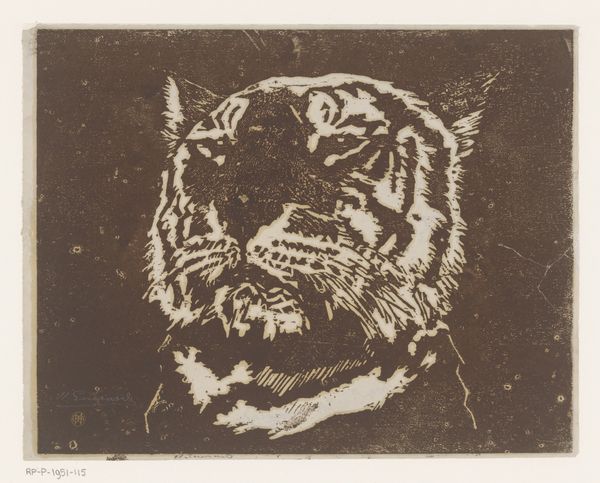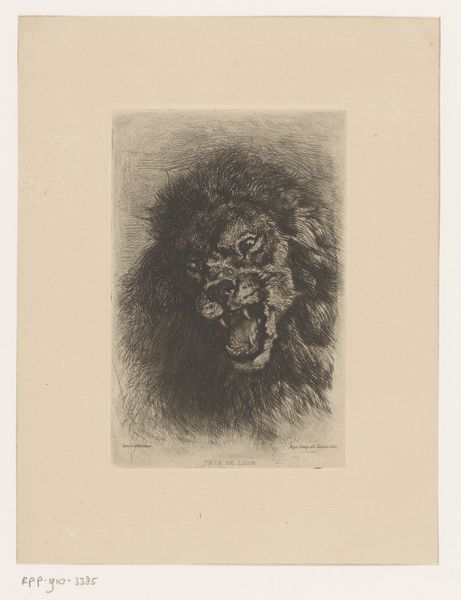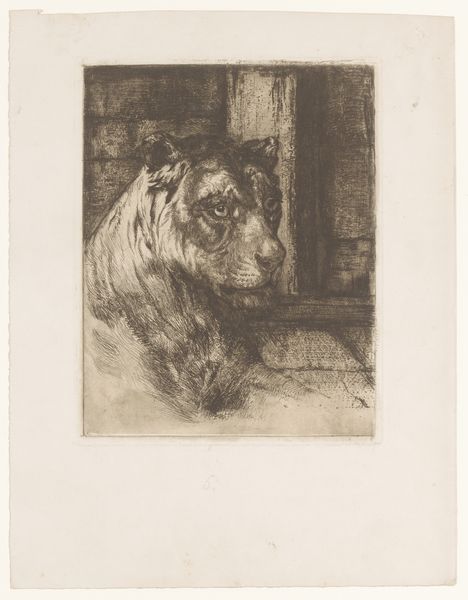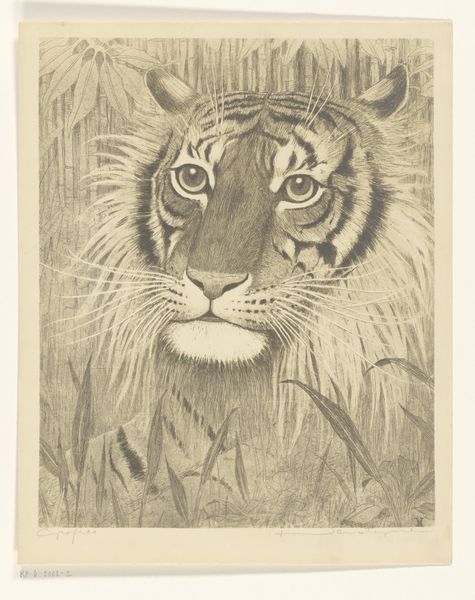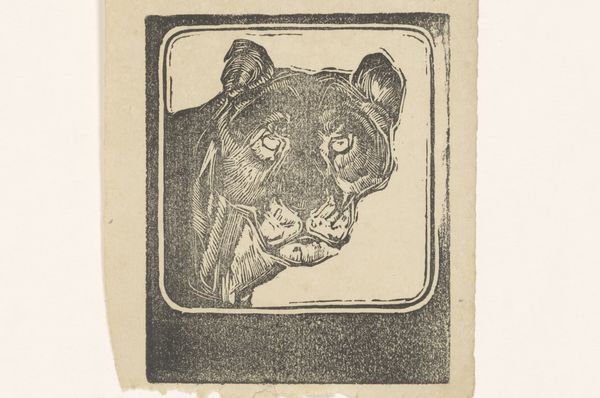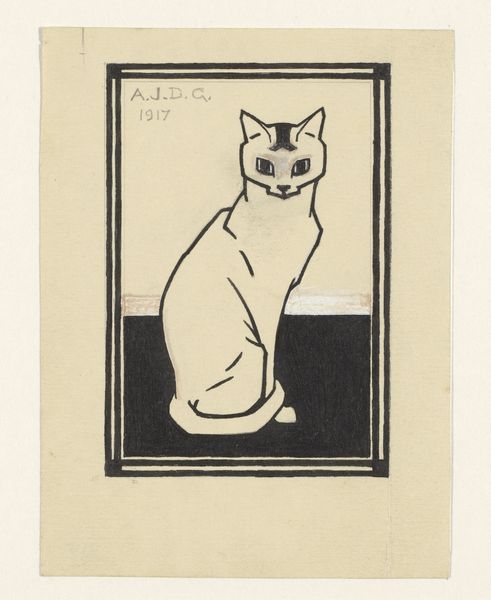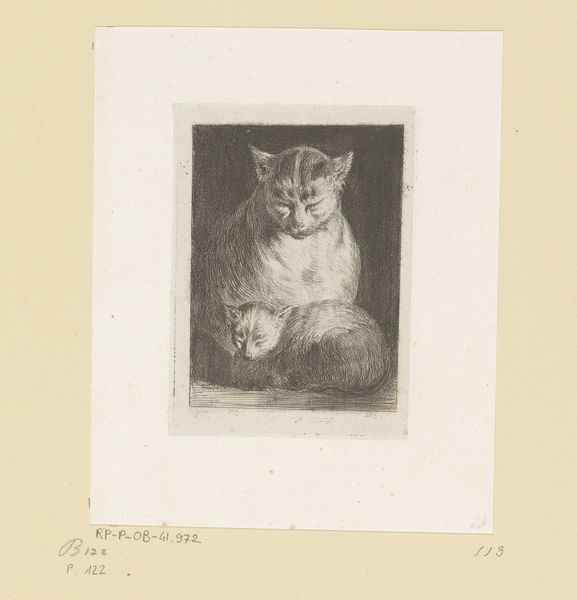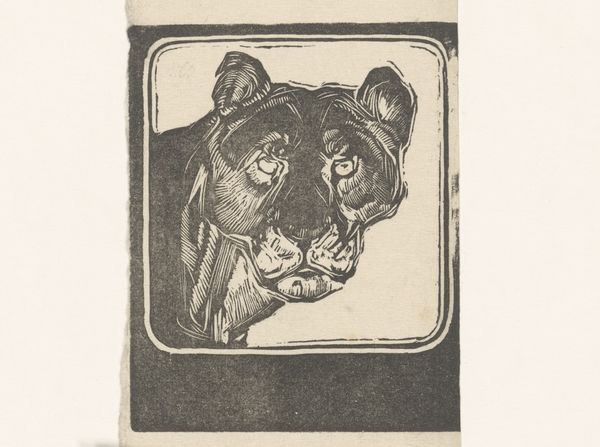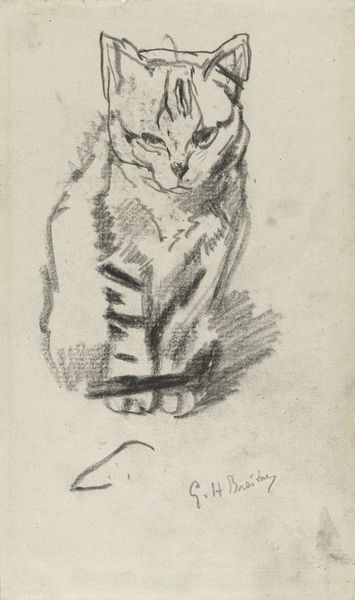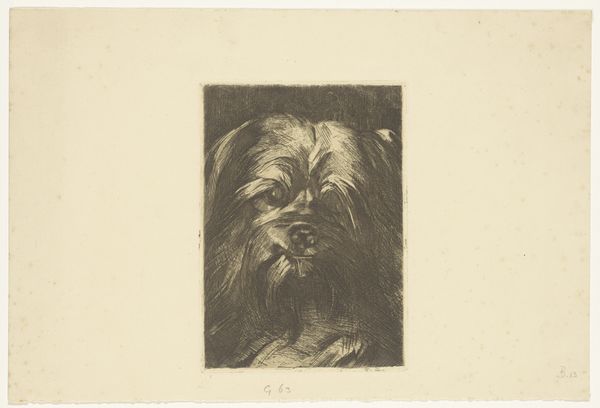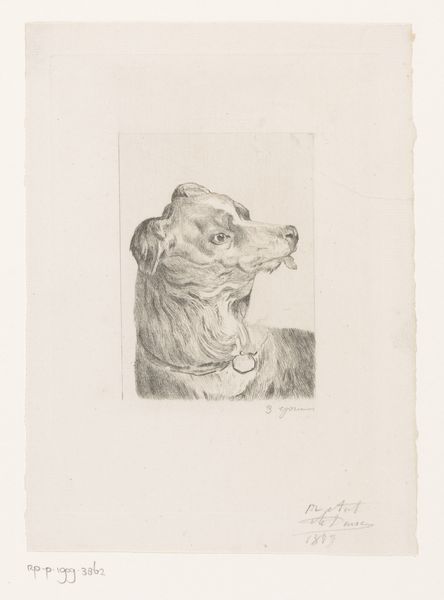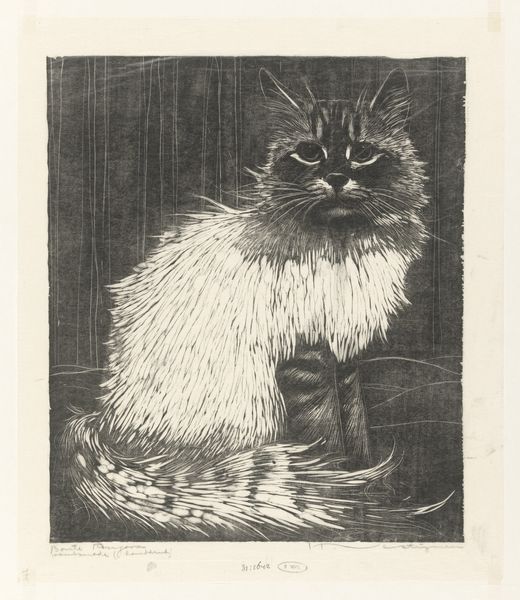
drawing, pencil
#
portrait
#
pencil drawn
#
drawing
#
pencil sketch
#
portrait reference
#
pencil drawing
#
pencil
#
symbolism
#
portrait drawing
Dimensions: height 247 mm, width 187 mm
Copyright: Rijks Museum: Open Domain
Curator: Here we have Bernard Willem Wierink’s "Tijgerkop," created in 1915. The work is rendered in pencil, showcasing a rather unique portrait. Editor: It has a melancholic feel. The somber shading and downward gaze of the tiger evoke a sense of resignation. It is as if it is bearing the weight of something. Curator: Precisely! The artist’s delicate manipulation of line and tone gives the image a somber emotional depth, while the arched frame containing the tiger's head seems to mimic architectural elements such as temple portals, thus giving off a sense of reverence for a divine or noble spirit. Observe how Wierink uses tight hatching and delicate rendering to delineate the form. Editor: And the symbolic weight of the tiger cannot be ignored. Often a symbol of strength and ferocity, its downcast expression hints at something more nuanced. Do you think it might have been an emblem representing the Netherland's anxieties amidst the events of World War I, in 1915? A powerful beast humbled by unseen forces? Curator: Possibly, or Wierink might be employing symbolic reversal, confronting traditional masculine traits, portraying something more emotional in nature. Note how the directionality of the pencil strokes emphasize the form: the downward curve of the head, and the fur texture on the chest, almost organized into linear blocks, lending the whole artwork an almost architectural and structural feel, not something one usually sees in drawings. Editor: That geometric impression creates a sense of formality, and distance. It's as if the animal has been deconstructed into shapes and shades. Its presence becomes both immediate and elusive. What stories do you suppose are wrapped up in those shaded blocks, carefully organized on paper? Curator: The blending of technique, iconography, and emotion offers layers of meaning worth uncovering, that's certain. Editor: Agreed, a work filled with questions rather than declarations.
Comments
No comments
Be the first to comment and join the conversation on the ultimate creative platform.
